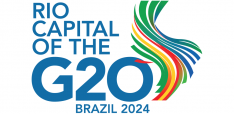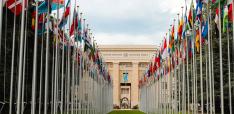What Counts as Slavery Today?

This is the first chapter in a forthcoming Global Policy e-book on modern slavery. Contributions from leading experts highlighting practical and theoretical issues surrounding the persistence of slavery, human trafficking and forced labour will be serialised here over the coming months.
Many different practices and experiences have been described by activists and politicians as forms of slavery, or as equivalent to slavery. Common examples of include exploited workers seeking better pay and conditions describing themselves as ‘wage slaves’, or revolutionaries accusing tyrannical political regimes of unjustly ‘enslaving’ their subjects. Over the last three decades, there has been a major investment in the concept of ‘modern slavery’, which is also closely associated with the related categories of human trafficking and forced labour. While each of these categories means different things from a legal standpoint, the finer distinctions between them frequently get lost, with modern slavery, human trafficking and forced labor frequently being portrayed as essentially interchangeable and equivalent. This lack of precision at least partly stems from the potency of slavery as a symbol of extreme abuse. For many campaigners, the specifics of slavery tend to be overshadowed by the powerful images which slavery evokes.
Since any number of different practices have recently been described as ‘slavery’, we are faced with the question of what counts as slavery in our world today. It is much harder to answer this question now than it was in the past. For the vast majority of human history, slavery was a legally recognised category that was officially regulated and defended by governments and religious authorities. While different historical slave systems had different features, they were nonetheless broadly defined by a series of publicly recognised rules which governed the status of the enslaved. Individuals who were enslaved were in little doubt as to their status, since there were elaborate systems in place that carefully codified how they could be sold, inherited or manumitted. These systems were in turn defended by layers of violence and surveillance, which were designed to collectively keep the enslaved in their ‘rightful’ place, and to prevent and punish resistance. Thanks to the passage of numerous laws outlawing slavery throughout the globe, our world today is now organised on quite different terms. There remain no shortage of horrific examples of exploitation, vulnerability and coercion, but the elaborate systems that regulated and defended slavery as a distinct institution have been almost entirely dismantled, although their legacies still continue via enduring systems of discrimination, privilege and white supremacy.
How do these and other changes impact how we go about approaching slavery today? Should we favour a narrow approach, since historical slave systems displayed a number of distinctive features which sharply separated enslavement from other categories of exploitation? Should we instead favour a broader approach, since many of the abuses associated with historical slave systems have not come to an end despite numerous laws outlawing slavery? When political activists refer to ‘modern slavery’, should we be reluctant to ask too many questions since they are seeking to improve the world? Does insisting upon a strict definition play into the hands of people who are abusing human rights? Or do we risk slavery becoming meaningless if all kinds of abuses can be now classified as forms of slavery? Does embracing a broad approach end up diluting and decentering the historical atrocities of Transatlantic enslavement and its legacies?
There can be no easy answers to these types of questions. Different people will have different perspectives and interests when it comes to determining what counts as slavery. On this issue, as with many other issues, the infamy and iconography of Transatlantic enslavement continues to cast a long shadow. Thanks to the cataclysmic experiences associated with centuries of Transatlantic enslavement, slavery is commonly recognised as epitomising the ‘worst of the worst’ as far as exploitation, vulnerability and coercion are concerned. When different practices are described as forms of ‘slavery’, or ‘slavery by another name’, this typically involves politically motivated efforts to harness the historical notoriety of Transatlantic slavery in order to highlight specific examples of exceptional levels of abuse that continue to be found in the world today.
Classification via comparison
Organised political opposition to slavery as a general institution most strongly emerged in response to the severe and systemic abuses that defined Transatlantic enslavement over nearly four centuries. As is well known, this historic catastrophe had far-reaching consequences for many parts of Africa, which experienced major transformations due to the political economy of enslavement that emerged from Europe’s rising demand for slaves to work in the colonial Americas. This in turn led to the cumulative horrors of the voyage to the Americas, which involved a concentrated period of severe suffering, trauma and death. Enslaved Africans who were fortunate enough to survive this transcontinental forced migration were then subjected to an extremely exploitative and abusive slave system that was primarily defined on the basis of racial difference and ruthlessly structured around economic calculations and capitalist markets.
The emergence of organized political opposition to slavery was heavily influenced by these distinctive features. From the eighteenth century onwards, the severe abuses which defined Transatlantic enslavement would come to be attributed to a sharply demarcated, economically exploitative, and racially defined institution which could also be legally abolished, and thereby ostensibly ended. Opponents of slavery generally had no problem identifying who the enslaved were – or how they differed from non-slaves – because slavery was a clearly demarcated legal category with a venerable historical pedigree. Enslavement also had an intimacy and immediacy which was derived from all kinds of lived experiences. Despite the fact that not all Africans in the Americas were enslaved, the entrenched association between slavery and race also further ensured that slavery was widely regarded as institution which stood apart from other practices.
While there were many aspects to the case against enslavement, there were two themes which stood out: the ownership of human beings and extreme dominion and exploitation. These themes were central to the overall case against slavery, because they were foundational to arguments regarding the core features which clearly set slavery apart from other institutions. Transatlantic enslavement would come to be defined in terms of powerful images, spectacles, and testimonials of extraordinary suffering and abuse: chains, ships, whips, auctions, death. This iconography has a complex and contested history, as scholars such as Saidiya Hartman have demonstrated, but these images have nonetheless established a series of markers which have played key roles in shaping how Transatlantic enslavement has been connected to contemporary practices. There continue to be efforts to minimize or excuse the atrocities of Transatlantic enslavement, as the lingering popularity of the Confederate battle flag in the United States demonstrates. However, this denial has limited traction within modern slavery circles, where there is a consensus that Transatlantic enslavement defines the absolute worst of the worst.
This iconography of Transatlantic enslavement has major consequences for efforts to classify contemporary forms of exploitation. Whenever questions get asked regarding the status and severity of different forms of exploitation, the main benchmark for comparison tends to be Transatlantic enslavement, human property and extreme exploitation. As scholars such as Igor Kopytoff have argued, comparisons between Transatlantic enslavement and other forms of exploitation tend to be structured around subjective appraisals of ‘good’ or ‘bad’ treatment, which in turn function as primary benchmarks for assessing the relative severity of specific practices. When treatment serves as the main benchmark, comparisons usually unfold in two different directions: distancing or equivalence (figure two, below). On the one hand, we have distancing, where other forms of exploitation end up being classified as less ‘severe’ than Transatlantic enslavement. They are therefore classified as either lesser evils and perhaps even positive goods. On the other hand, we have equivalence, where other forms of exploitation end up being classified as equivalent to Transatlantic enslavement. They are therefore classified as the worst of the worst. Efforts to classify abuses according to levels of treatment also tend to be influenced by broader ideas about innocence and vulnerability, which mean that the exploitation of women and children tends to be regarded as more extreme than that of adult males, especially in contexts where exploitation is associated with sexual activities. Treatment is a crude and incomplete benchmark, which does not necessarily do justice to many aspects of experiences of enslavement, but it is nonetheless widely used as a primary framework for classification.
The politics of ‘free’ and ‘unfree’
There is a hierarchy at work here which is worthwhile teasing out in more detail. Recent comparisons between Transatlantic enslavement and other forms of exploitation typically locate Transatlantic enslavement at an exceptional position at the apex of a spectrum of exploitation, vulnerability and coercion. This hierarchy can be visually represented in terms of a triangle (figure one, below), with Transatlantic enslavement occupying a position at the upper most point, with other categories or ‘levels’ of exploitation and vulnerability being located further down the triangle based on subjective appraisals of their ‘lesser’ severity. The key point is that comparisons between these sorts of categories exercise a major role in shaping how people think when they are faced with questions of how different practices should be classified. Many different historical practices could also potentially be located on this triangle (the Spanish and Portuguese continue to disingenuously and incorrectly declare that their slave systems were ‘mild’ based upon self-serving comparisons with the French and English). In this context, however, I am chiefly concerned with how the classification of current practices is defined by this hierarchy.
Figure One: Benchmarking contemporary practices against Transatlantic enslavement

Figure Two: Equivalence and Distancing

This contemporary focus is reflected in the other categories which have been included here: ‘lesser’ forms of servitude, exploitative ‘free’ labour, and ‘normal’ labour and living conditions. None of these categories are straight-forward. Firstly, we have servitude, which is an umbrella term which is usually understood to include slavery as a subcategory, with other forms of servitude including serfdom, pawnship, and indentured, bonded and forced labour. The language of ‘lesser’ servitudes, which comes from the work of international lawyer Jean Allain, refers to practices that are said to fall just short of slavery, but which nonetheless share core features in common with slavery in terms of overall forms of exploitation, or levels of treatment.
Next we have exploitative ‘free’ labour, which comes with all kinds of complications. Whenever ‘free’ labour gets compared to slavery – or ‘unfree’ labour more broadly – the terms of the comparison almost invariably end up casting free labour in a highly favourable light. This is politically significant, since it portrays ‘free’ labour as a condition which is positive or desirable, and in turn suggests that people should be thankful to be ‘free’. Although freedom is commonly associated with many positive virtues, the accompanying language of ‘choice’ or ‘consent’ can frequently end up obscuring more than it reveals. In theory, free labour involves workers negotiating a deal with an employer regarding their service. If the employer uses direct coercion to compel them to start work, or to continue to work, then their labour is said to become ‘unfree’. However, there will be many occasions where desperate workers lack viable alternatives, and therefore ‘freely’ consent to highly exploitative conditions. There are currently hundreds of millions of ‘free’ labourers across the globe who routinely endure terrible and irregular wages, unsafe and unhealthy workspaces and homes, sexual harassment and assault, and bullying and abuse. They may well be formally free to leave, in the sense that they retain the capacity to seek out other forms of work, but their capacity to exercise any kind of individual ‘choice’ is nonetheless constrained by their precarious status and a shortage of viable alternatives.
‘Free’ labour will always be a deeply political issue. Classifying specific abuses as forms of slavery, or as equivalent to slavery, typically involves a political and ethical argument that they represent exceptional cases of exploitation and abuse that belong at the very apex of this triangle as the worst of the worst. Where does this leave many other cases of exploitation and abuse that fall short of this threshold? Does targeting these ‘exceptional’ cases mean excluding ‘non-exceptional’ forms of exploitation? Do cases of exploitative ‘free labour’ become desirable, or unremarkable, because they are said to fall short of the threshold associated with slavery? Should the primary focus be severe forms of labour exploitation or all forms of labour exploitation?
‘Exceptional’ cases and everyday systems
Some of the issues at stake here can be illustrated by thinking about labour practices in global supply chains. As is well known, the last three decades have seen numerous international corporations engage in a race to the bottom, with most aspects of production processes and supply chains being relocated to countries in the Global South with lower wages, less regulation, and fewer workplace protections. For corporate executives, the main goal of the global supply chain is to maximize corporate profits while minimizing their political and legal liability by subcontracting many aspects of the production process to outsiders. Major corporations exercise their market power to drive down costs per unit, since their numerous suppliers in the Global South have limited capacity to bargain for better returns or less demanding production cycles. This combination of low prices and high expectations means that companies further down the chain are under sustained pressure to minimize wages and working conditions. Contracts get subcontracted and then subcontracted again, creating multiple layers between the corporation and the worker who ends up producing the actual goods that the corporation required.
How should workers towards the bottom of these global supply chains be classified? Do they belong in the ‘free’ labour category, or do their circumstances sometimes rise to the threshold of slave or unfree labour? When faced with the question of classification, should we primarily focus upon similarities with slavery, and thereby advance an argument that their exploitative working conditions can classified as the same as, or as bad as, slavery (i.e. equivalence). Should we alternatively concentrate upon differences, and thereby advance a counter argument that they cannot be equated or associated with slavery, and therefore belong on a much lower rung within the above hierarchy (i.e. distancing)? Not everything belongs at the tip of the triangle, but the dividing line in the middle between ‘free’ and ‘unfree’ also raises challenging questions as well.
How specific practices get classified is rarely neutral or disinterested, but instead gets shaped by competing agendas and interests. It should come as no surprise that corporations and supply chain subcontractors are keen to create as much distance as possible here, since no company wants to be known for sanctioning or practicing modern slavery or unfree labour. It is for this reason that someone like Ivanka Trump, whose ‘Trump’ branded products are made by precarious and vulnerable workers in places such as Indonesia, is able to publicly denounce modern slavery as an ‘ugly stain on civilization.’ The stain of modern slavery gets defined and demarcated in a way which leaves everyday systems of labour exploitation outside the frame.
Questions of classification usually involve both legal standards and lived experiences. Take, for example, the legal arrangements which typically govern migrant workers who travel internationally to countries in Middle East to work on constructions project or in private households. These workers are regulated by employment contracts and visa arrangements which are laid out in laws and policies, but they also continue to be subjected to numerous forms of exploitation and abuse. Various historical parallels can also be made here. When the Transatlantic slave trade was legally abolished, the British, French and Portuguese turned to indentured labour schemes, which saw millions of workers from India and elsewhere sign contracts which were subsequently bought and sold in ways that resembled slave trading. How much weight should we assign to contracts and consent? How important are the lived experiences of the workers? How should we respond when some migrant workers are treated in one way, while others have different lived experiences? There are an estimated 23 million migrant workers in the Arab Middle East. They are not always treated the same, but the systems under which they labour have been carefully designed to leave them vulnerable and precarious.
Laws and regulations can sometimes help to clarify the terms of this debate, but they are unlikely to provide a definitive resolution, since there will invariably be further disagreements regarding how they should be written, and on what basis they should be applied. We should not expect to reach a lasting consensus when it comes to whether or not any number of exploitative practices found in our world today should be classified as the same as, similar to, or entirely separate from slavery, and therefore merit being equated with or distanced from Transatlantic enslavement.
These dilemmas are magnified by the fact any effort to draw a line between slave and non-slave, – or ‘free’ and ‘unfree’ – will always be inherently political. Whenever slavery is the primary yardstick against which other practices are measured, then systems and cases of exploitation which end up being classified as ‘bad but not all that bad’ can appear unremarkable, or even desirable. This in turn has all kinds of political advantages for individuals, companies and governments that directly benefit from their operations. Hundreds of millions of workers are subject to highly exploited ‘free’ labour within supply chains and migration systems. Should the focus be all workers, or only workers who are deemed to be abused to an exceptional degree? While it may seem obvious that both exceptional abuses and everyday practices should both be addressed, this is rarely how things actually work out in practice. Selectively focusing upon the ‘exceptional’ will always be a politically appealing way of sidestepping systems of everyday abuse.
Joel Quirk is a Professor of Politics at the University of the Witwatersrand, South Africa. His research focuses upon slavery and abolition, human mobility, social movements, repairing historical wrongs, and the politics and history of Africa.
Photo by lalesh aldarwish from Pexels


